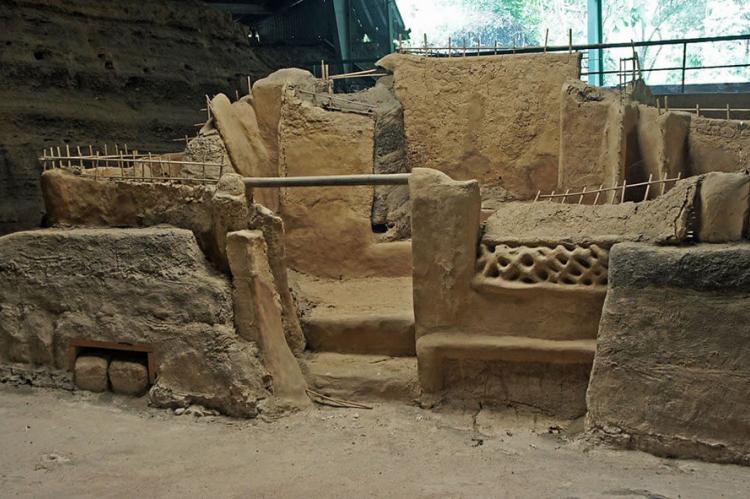Joya de Cerén, Archaeological Site (El Salvador)
Joya de Cerén is an archaeological site located in the Department of La Libertad, El Salvador. The site contains the remains of a pre-Hispanic farming village that was covered by a volcanic eruption in the seventh century AD. It is often referred to as the "Pompeii of the Americas."
Joya de Cerén Archaeological site
Joya de Cerén is an archaeological site in the La Libertad, El Salvador Department. The World Heritage Site contains the remains of a pre-Hispanic farming village covered by a volcanic eruption in the seventh century AD. It is often referred to as the "Pompeii of the Americas."
The site was discovered during the construction of grain-storage silos in 1976 when a bulldozer exposed a clay-built structure. Excavations were resumed in 1989 and have been continuing since that time.
Around AD 500, the central and western parts of the modern Republic of El Salvador territory were buried beneath thick layers of volcanic ash from the Ilopango volcano. The area was abandoned until the ash layer had weathered into fertile soil and the Joya de Cerén settlement was founded.
Around AD 590, it was destroyed by the eruption of the Loma Caldera. The eruption was phreatomagmatic in nature, depositing alternating units of "muddy" pyroclastic surge beds and lapilli, pumice, and volcanic bombs.
The eruption began with earth tremors and possible steam explosions, giving enough warning to allow the inhabitants of the nearby village to flee but violent enough that they left behind many of their most valuable personal items.
The circumstances of the volcanic event led to the remarkable preservation of architecture and the artifacts of ancient inhabitants in their original storage and use positions, forming a time capsule of unprecedented scientific value that can be appreciated in present times.
Underneath the layers of volcanic ash, the best-preserved example of a pre-Hispanic village in Mesoamerica with architectural remains is grouped into compounds that include civic, religious, and household buildings.
To date, 18 structures have been identified, and ten have been wholly or partially excavated. All structures are made of earth, and essential features like thatch roofs and artifacts found in situ have been recovered.
The excavated structures include a large community (public) building on the side of a plaza, two houses of habitation that were part of domiciles, three storehouses (one was being remodeled), one kitchen, and a sweat bath.
On the northeast side of the plaza, there is a religious building devoted to communal festivities and one where a shaman practiced. Rammed earth construction was used for public buildings and the sauna, and wattle and daub (which are highly earthquake resistant) for household structures.
The degree of preservation also applies to organic materials, from garden tools and bean-filled pots to sleeping mats, animal remains and religious items that typically deteriorate in tropical conditions and were part of the subsistence and daily life of the inhabitants. These have been preserved as carbonized materials or as casts in the ash deposits.
Several cultivated fields and other vegetation have also been uncovered. These include fields containing young and mature maize plants, a garden with various herbs and a henequen (agave) garden. Various fruit trees, including guava and cacao, have also been found.
The excavation of Joya de Cerén has given archaeologists a unique glimpse into the lives of ordinary Maya people. The houses were small and simple, but they were well-organized and equipped with everything the people needed for their daily lives. The people of Joya de Cerén were farmers who grew various crops, including corn, beans, and squash. They also raised chickens and dogs.
The eruption of Loma Caldera was a sudden and violent event. The people of Joya de Cerén had no time to escape and were buried alive in the ash. The eruption also destroyed the surrounding countryside, and it took many years for the area to recover.
{"preview_thumbnail":"/sites/default/files/styles/video_embed_wysiwyg_preview/public/video_thumbnails/64303695.jpg?itok=6zC-8I5A","video_url":"https://vimeo.com/64303695","settings":{"responsive":1,"width":"854","height":"480","autoplay":0},"settings_summary":["Embedded Video (Responsive)."]}





